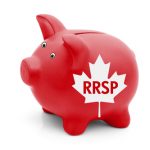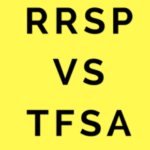By Emily Roberts
For the Financial Independence Hub
Most of us dream about and count down the days until our retirement, picturing ourselves at the beach, enjoying a cocktail while laughing about the days we spent slogging away at the office. These thoughts can be what get some of us through the workday, and even if you love your job and could never picture doing anything else, retirement is still the end goal for all of us so that we can enjoy our later years in peace and tranquillity.
Yet some of us go one step further and think about early retirement. While this may seem like an unachievable dream for many, it can in fact become a reality if executed properly. Retiring at 50 isn’t impossible, but it isn’t easy, either. Typically, people will retire between 65 and 67. This can seem like an age if you dislike your job or simply wish to slow down.
If you are wondering how you could retire early but also the benefits of retiring all together, read the following guide. Not only will it explain the advantages of retirement, but it will also list of the best ways to increase your chances of an early retirement as well as the signs that you may not be ready to retire just yet.
Good reasons to retire
There are many good reasons to retire. For starters, you may be unable to complete your typical day-to-day duties at work as you age. This is especially true for those who work in a physically demanding role such as construction or mining. Your body will be unable to keep up with this labour-intensive work and you are more prone to injuries.
However, retirement is a time for you to slow down and enjoy life. Rather than worrying about getting up and making it to the office in time, you can live your life at your own leisurely pace. While this may seem odd at first, the time you usually spend at work is now yours to do with it as you wish. If you’ve always wanted to focus on your art, then retirement can be the perfect time for you to focus on this hobby and passion of yours. Furthermore, if you have a family, retirement can provide you with the free time to focus on reconnecting with your family (and friends!) and make long-lasting memories with them. This is especially valuable for those who have grandchildren.
Other benefits of retiring include being able to look after your mental and physical well-being. Having a career and being so focused on your job can cause you to forget about what is important: your health. We neglect healthy, balanced meals with those that are quick and typically full of saturated fats. We also lose track of time or are simply too tired to head to the gym even though working out consistently is essential. What’s more, some of us simply need to focus on our mental health more than others and heading to work and working specific hours can be harmful to our mental well-being.
Why Early Retirement can be beneficial
There are numerous benefits associated with retirement; however, there are even more linked to early retirement. For instance, when you retire early, you are able to focus on yourself and the hobbies you have longed to invest time in but was never able to before. With the free time and extra drive you have to spend on your hobbies, you could even consider turning your hobbies into a means of making extra money. For example, if you love to paint or draw, then you could always sell your artwork either online and through a website such as Etsy, or you can make a day of it and sell your work at a local market or yard sale. While you will want to have the mindset of this being a hobby that could potentially bring in some income, this can be a great way to bring you purpose while you’re retired. Continue Reading…







